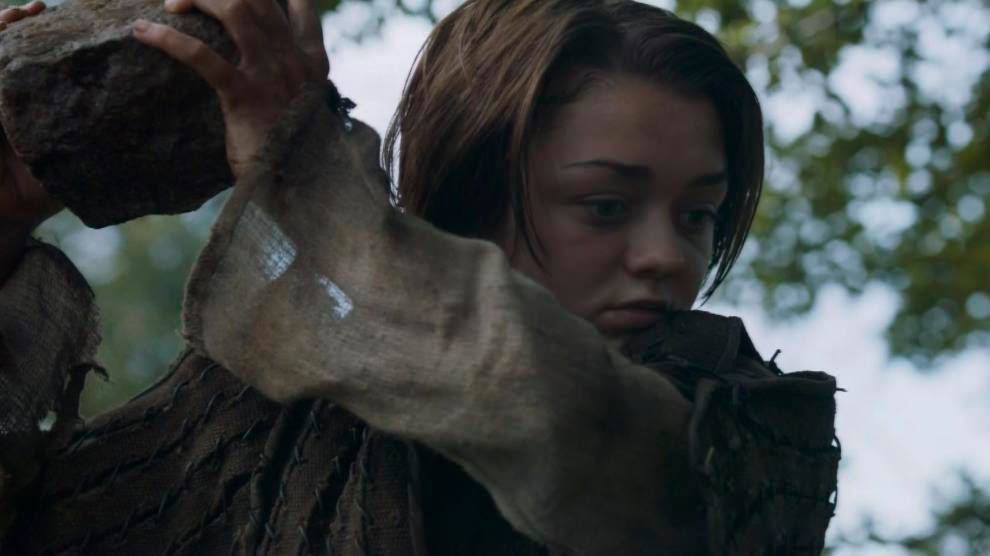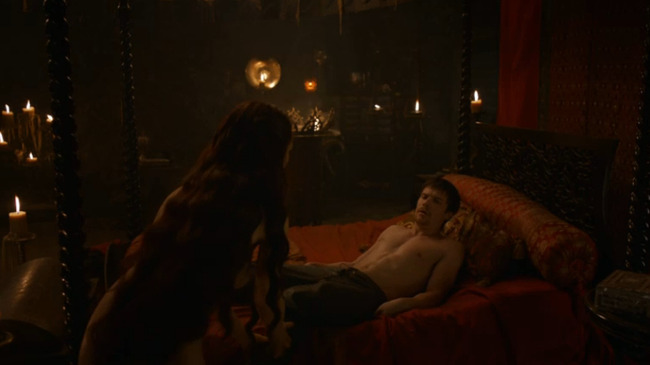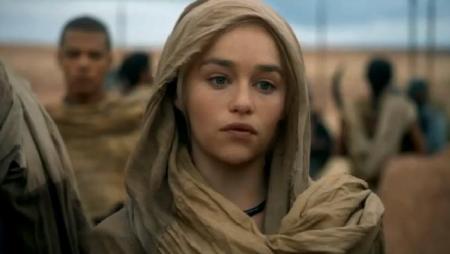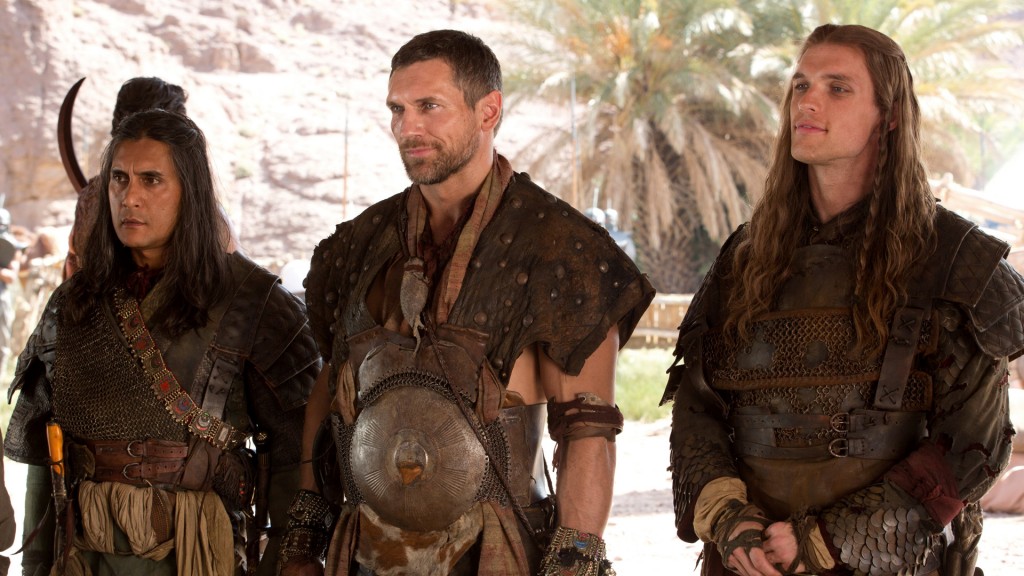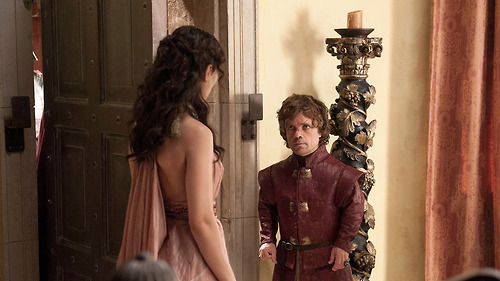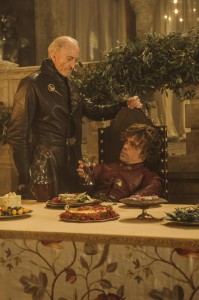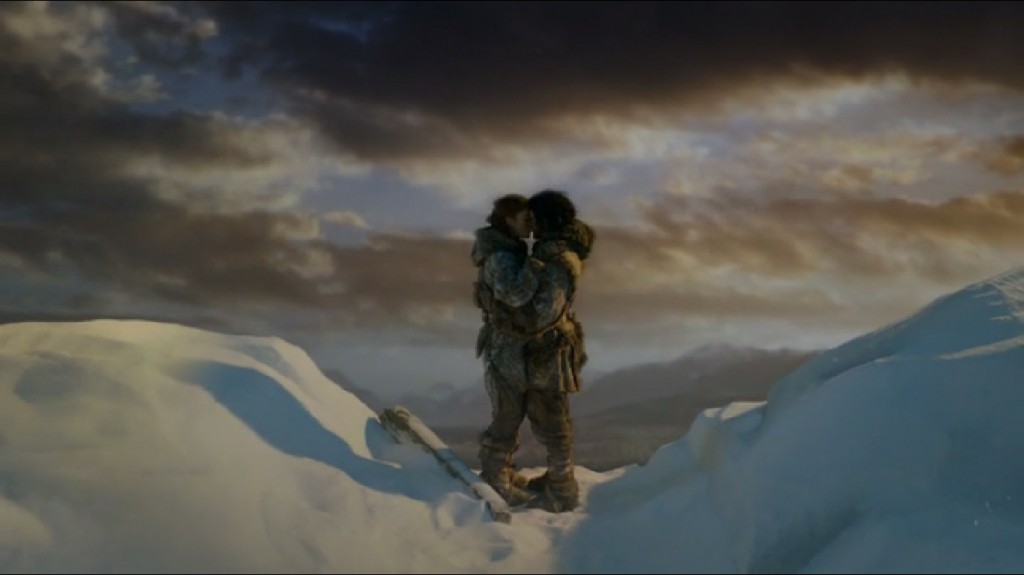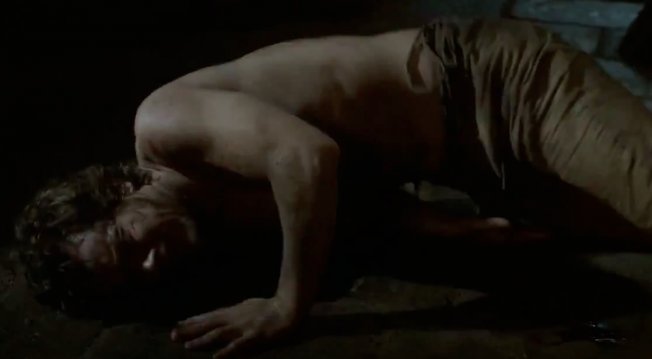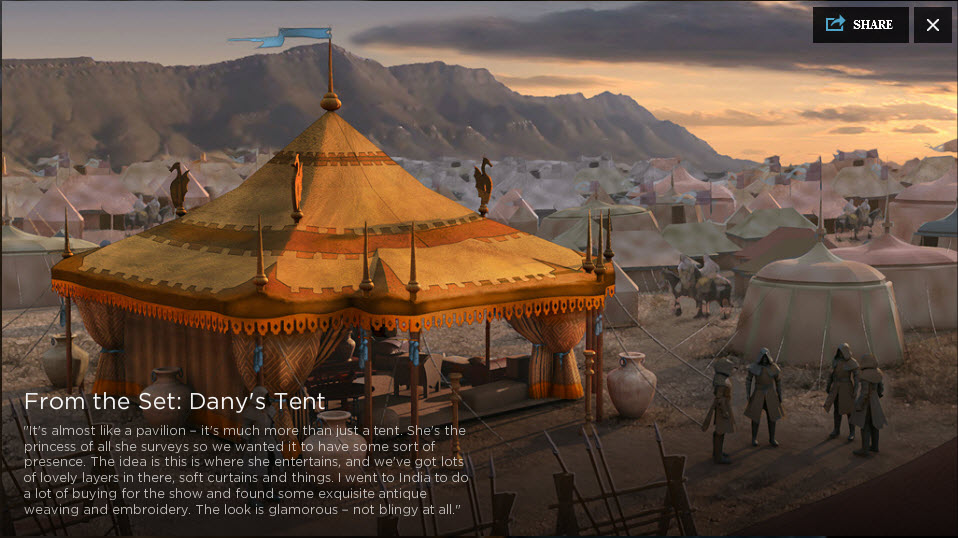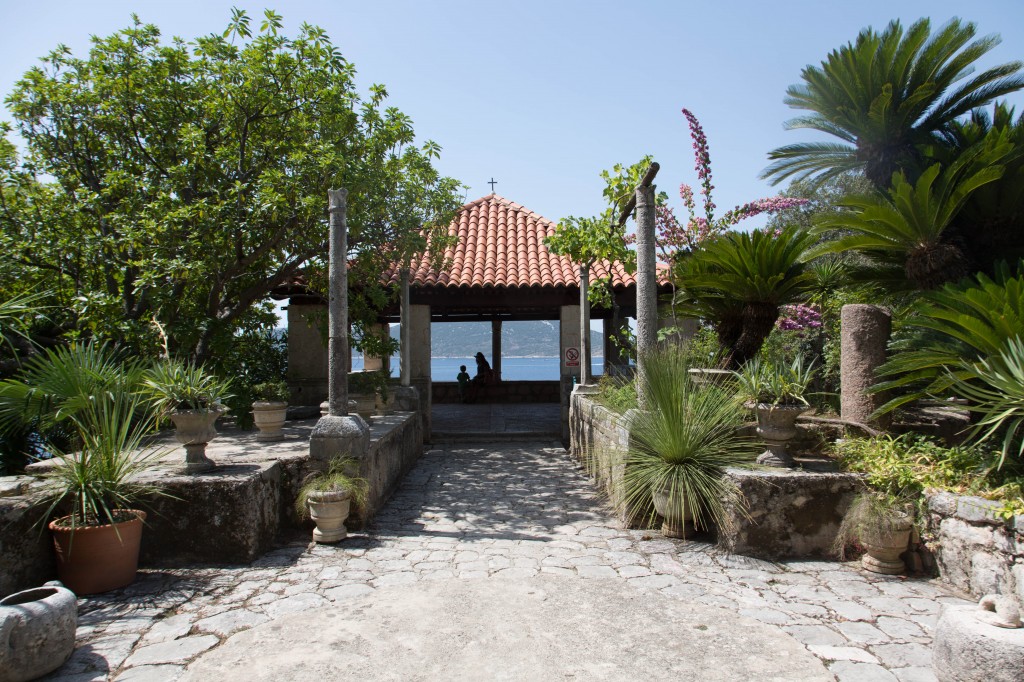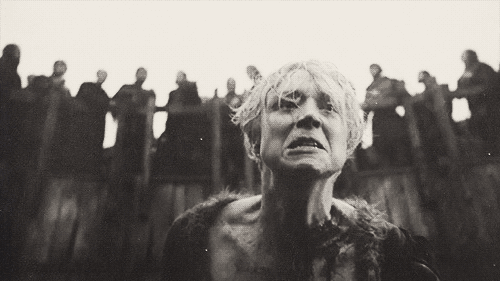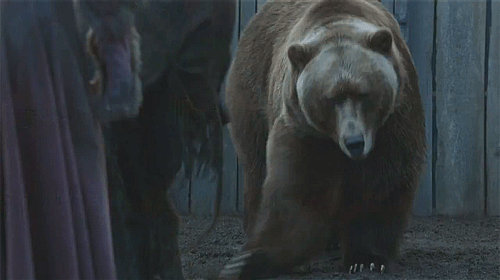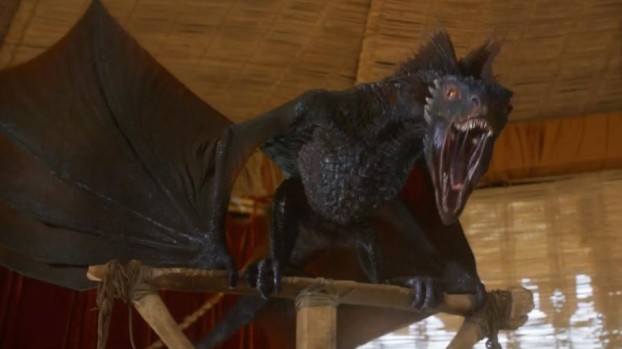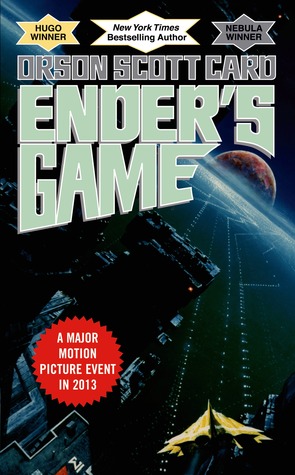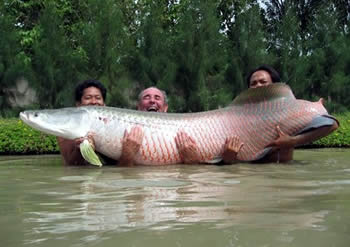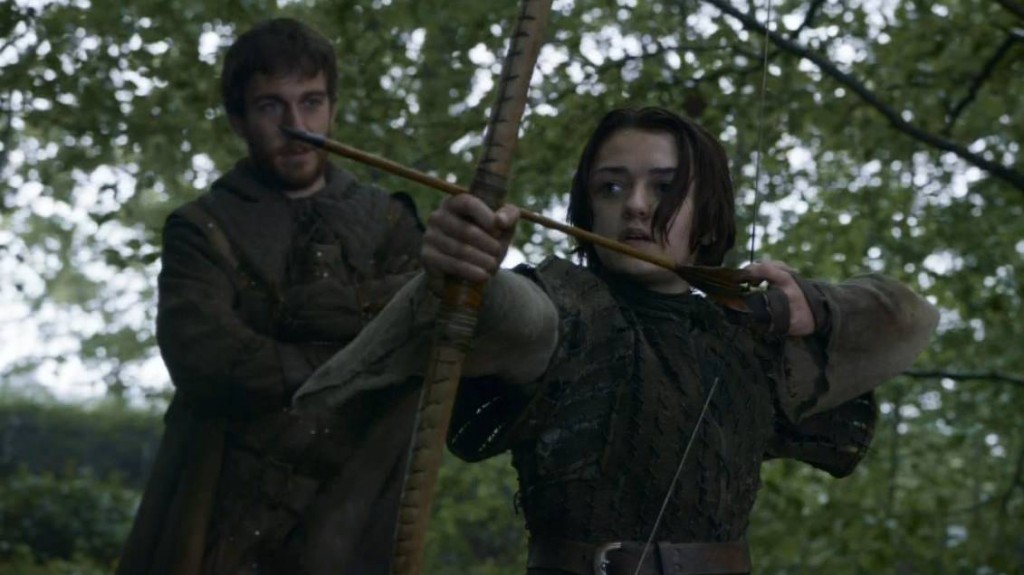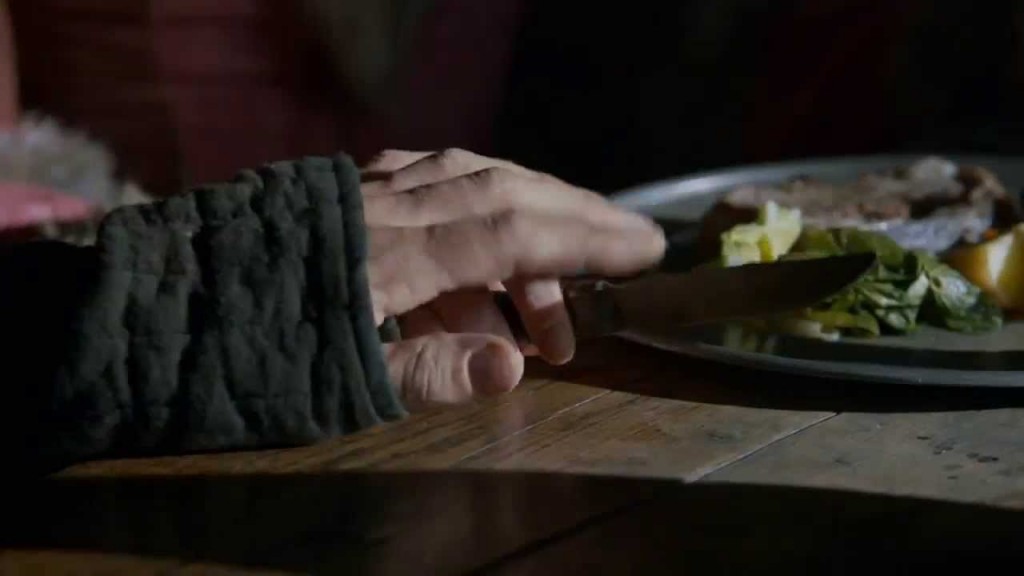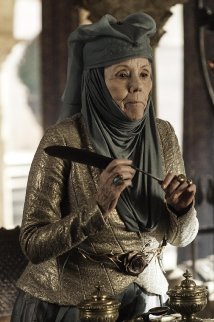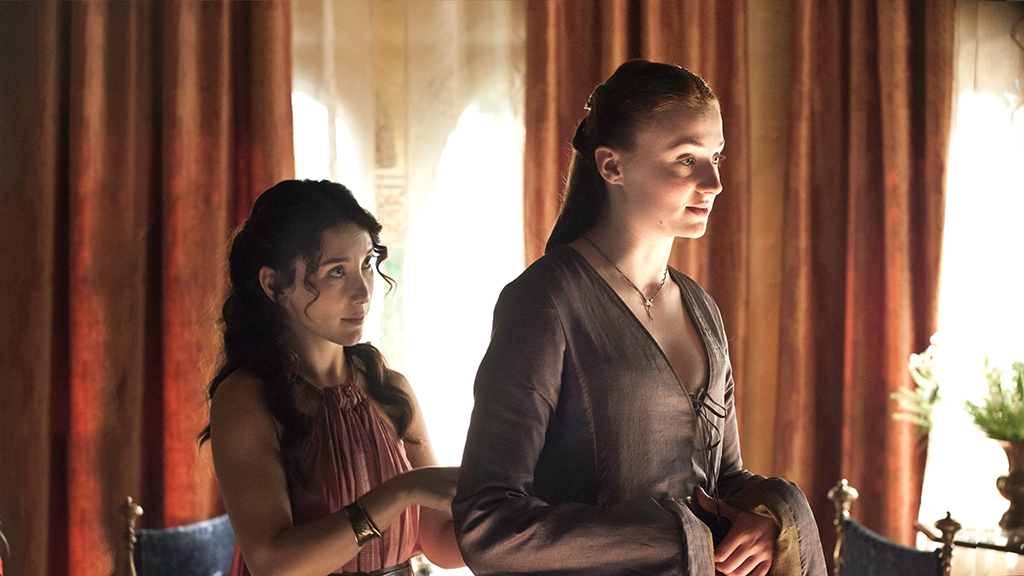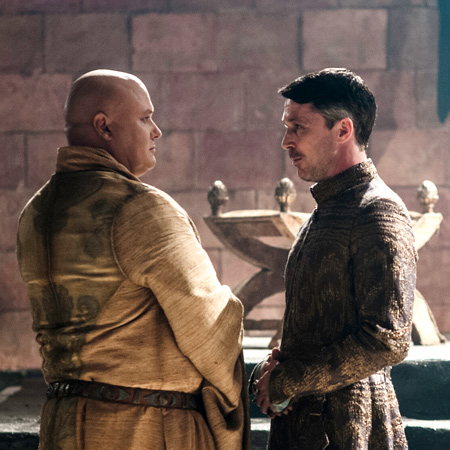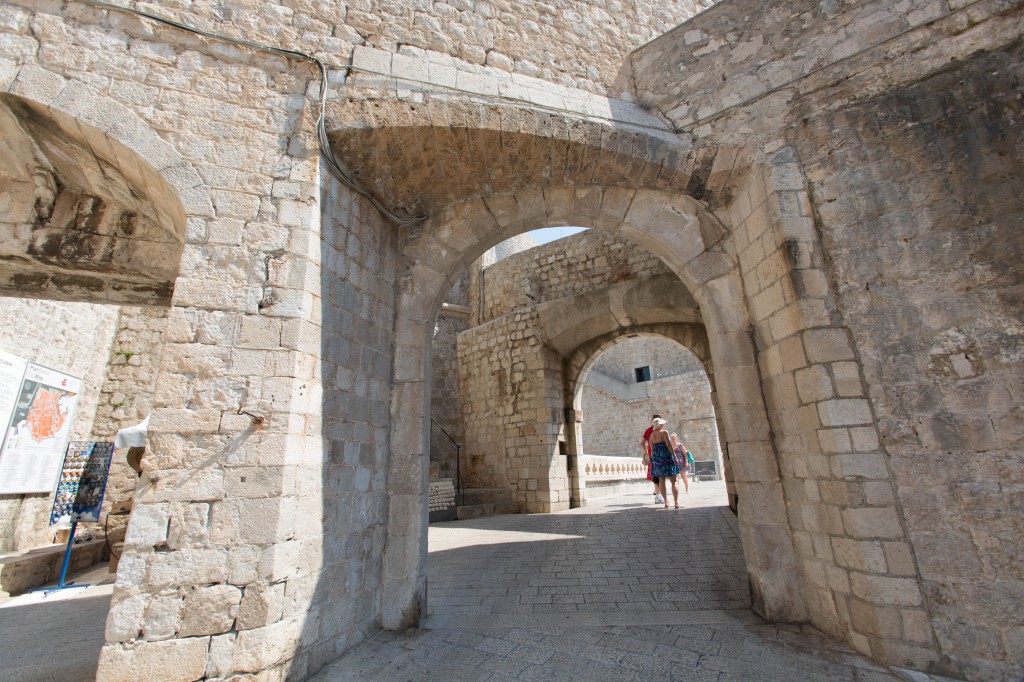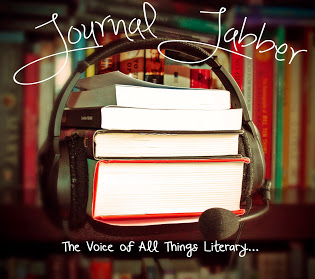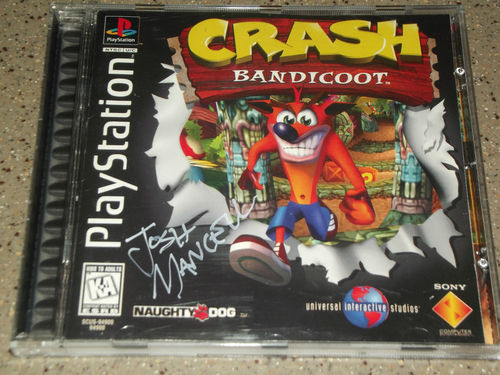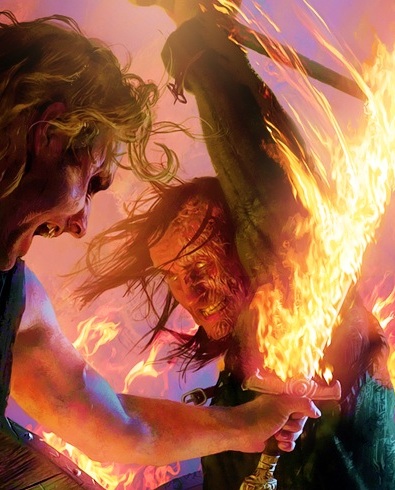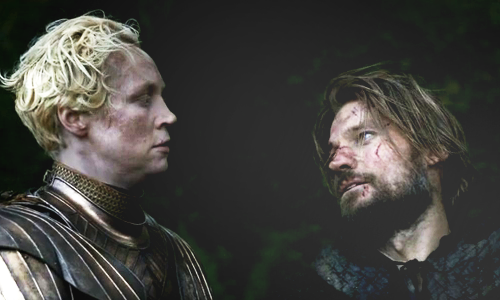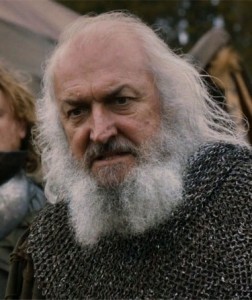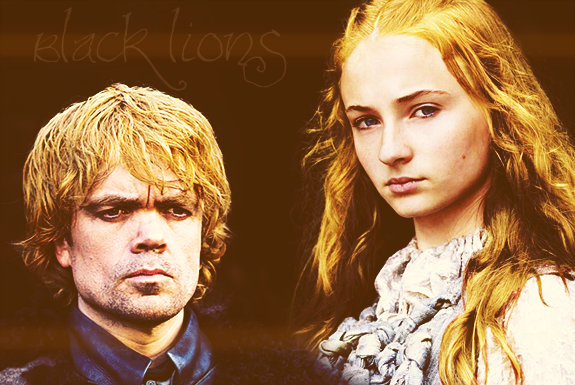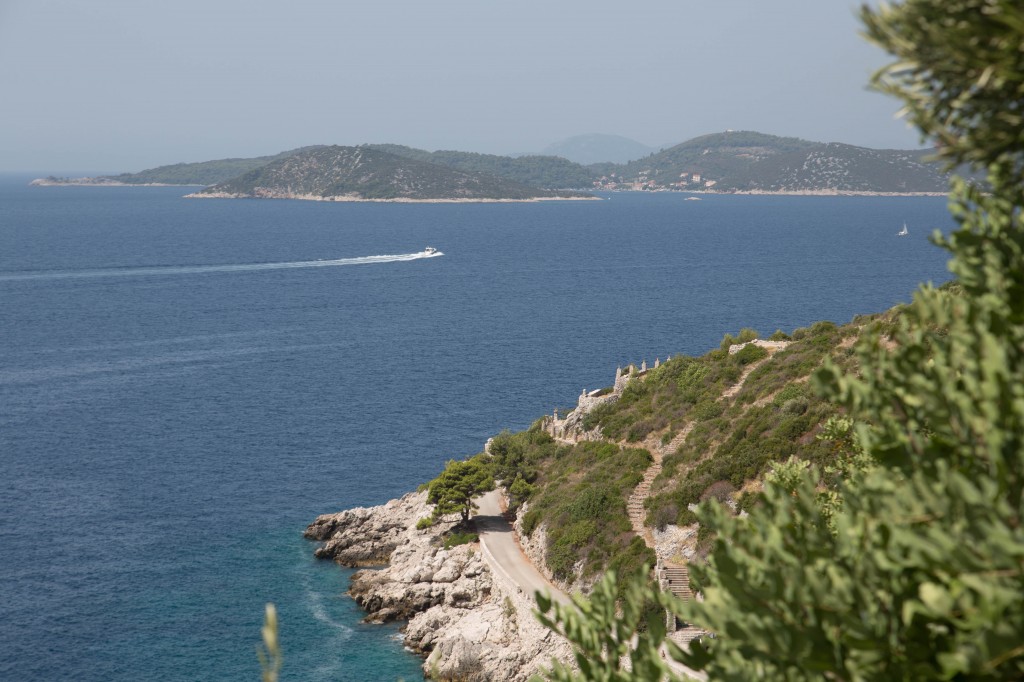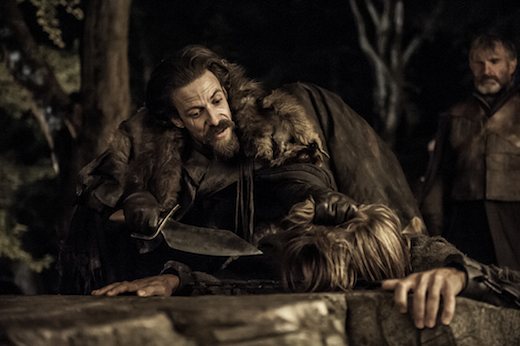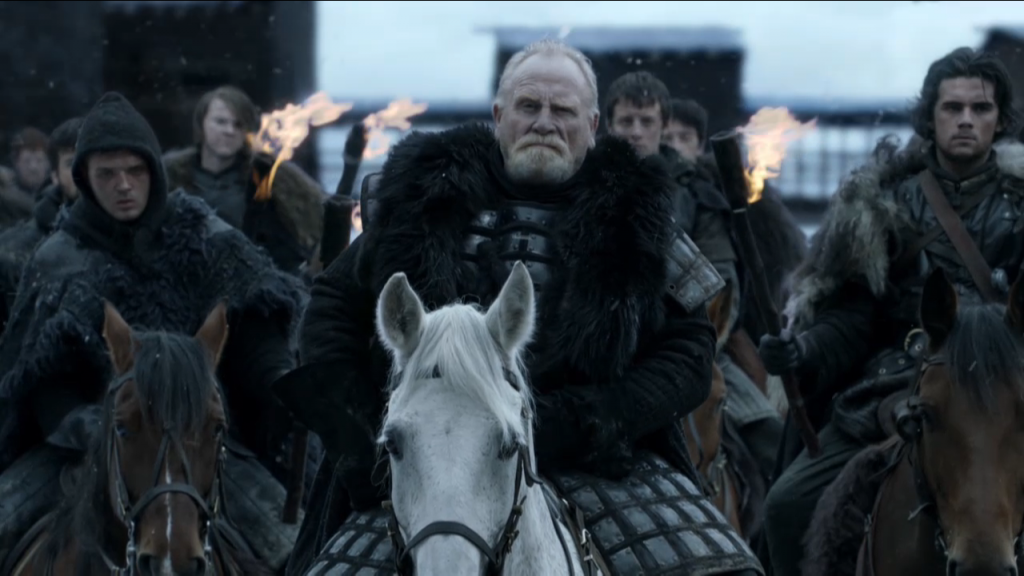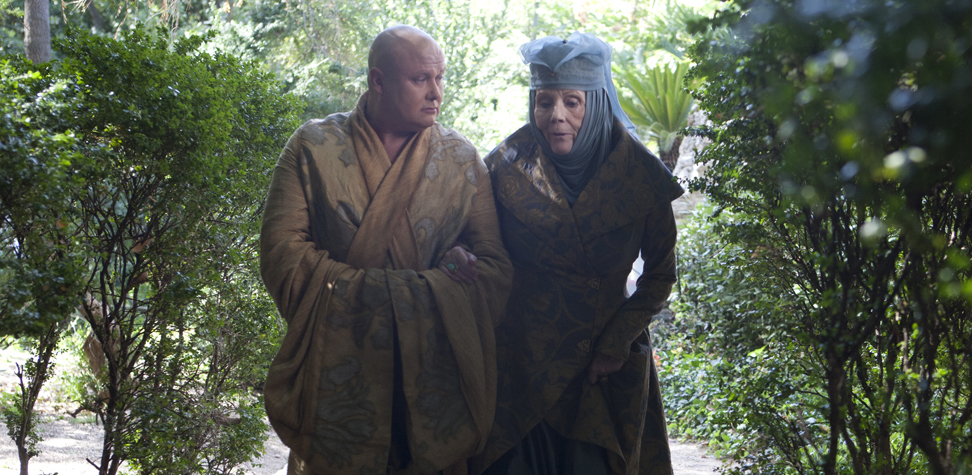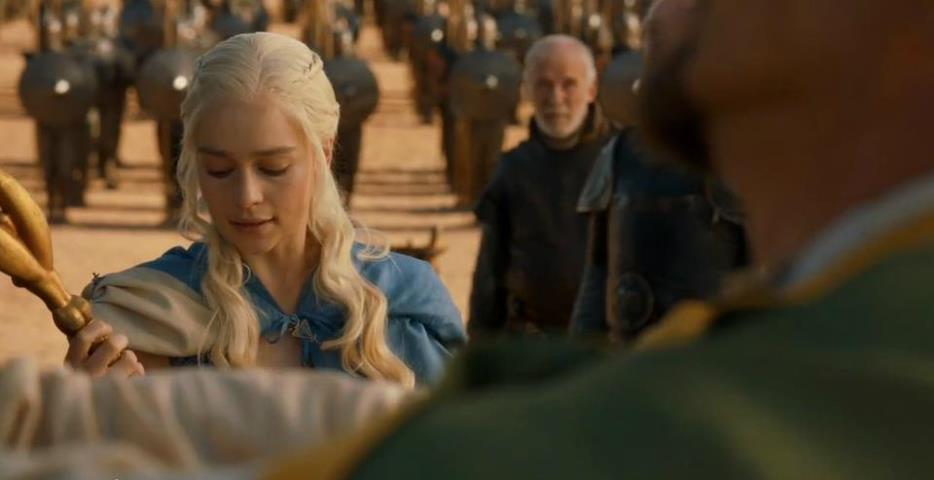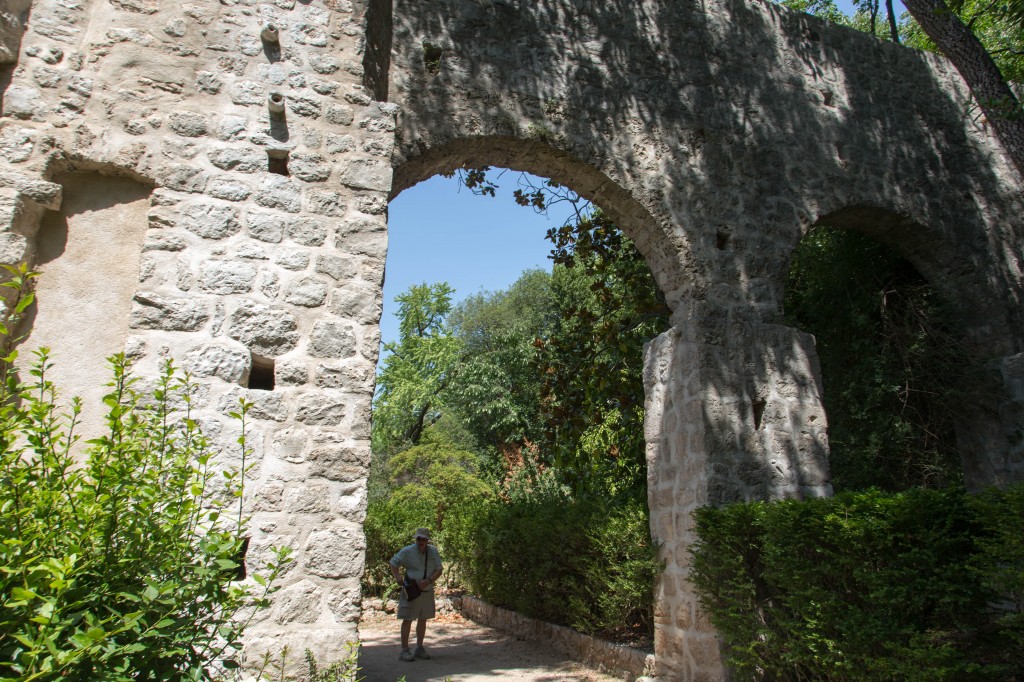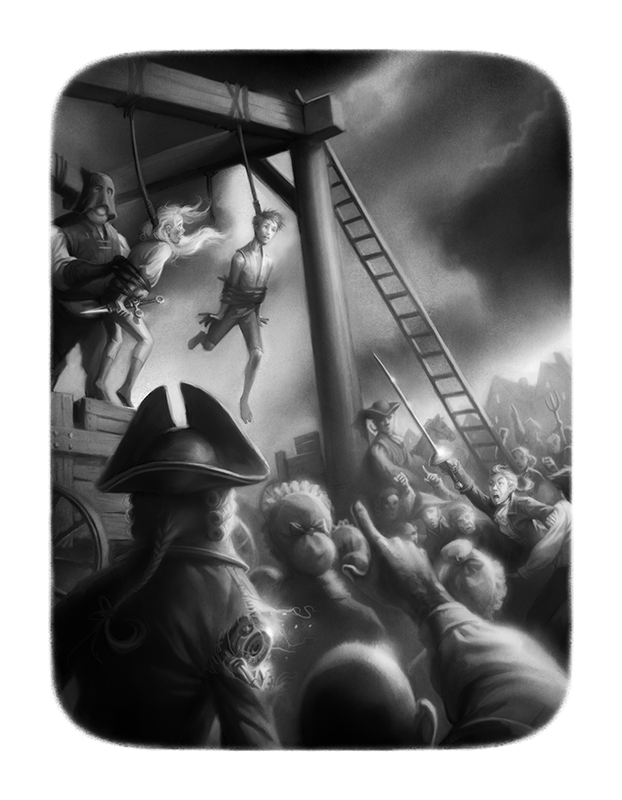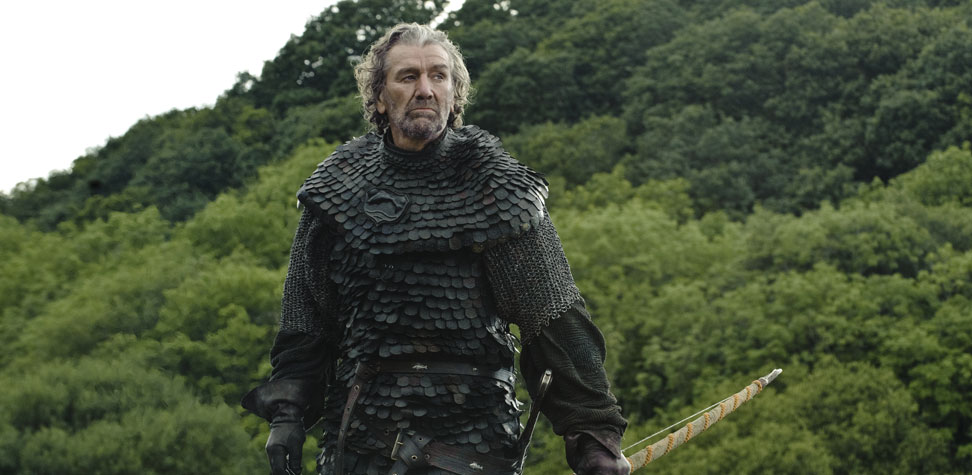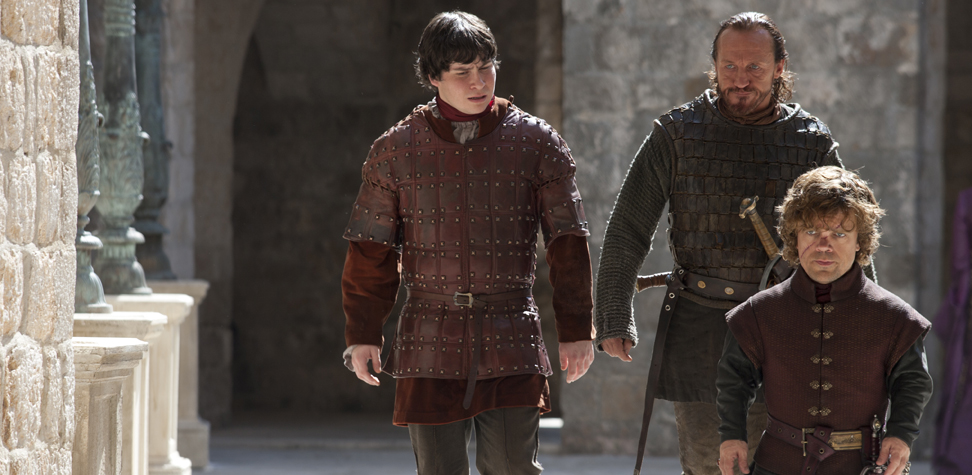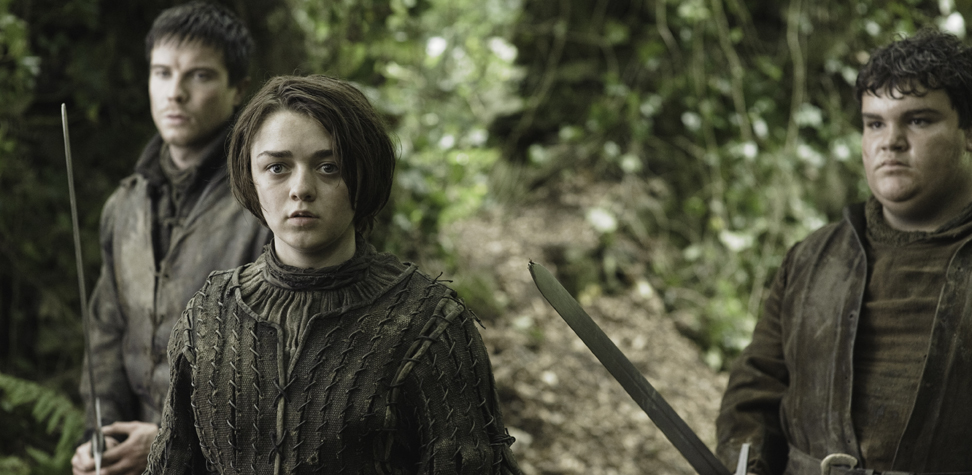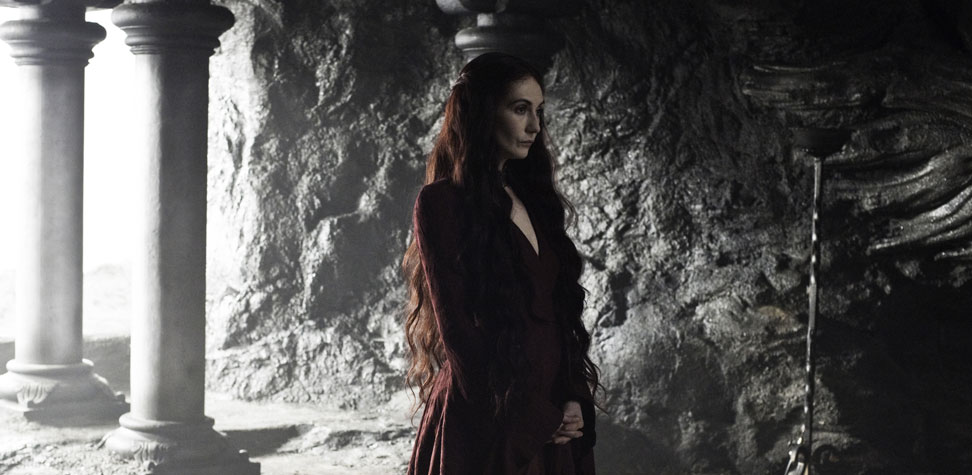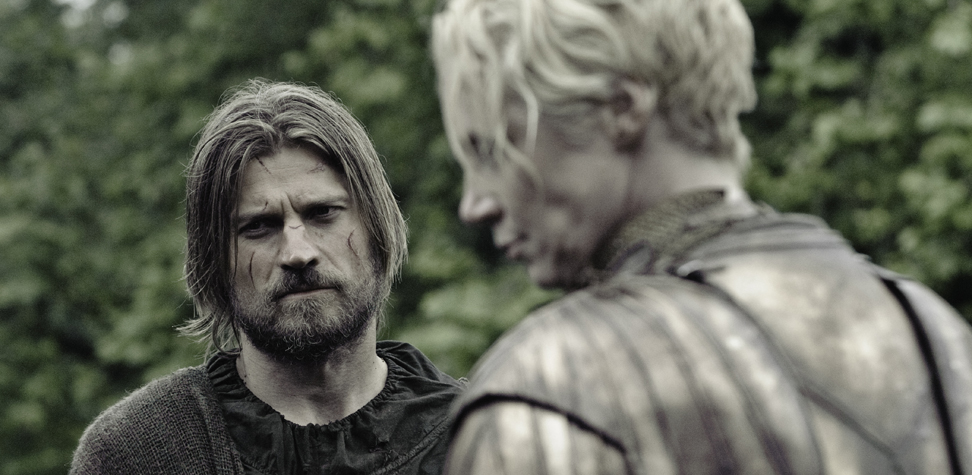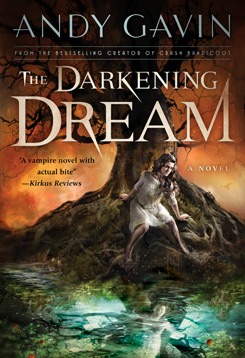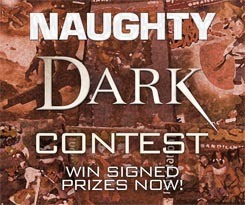 Title: Game of Thrones
Title: Game of Thrones
Genre: Historical Fantasy
Watched: Episode 28 – May 18, 2013
Title: Second Sons
Summary: Really great character work
Marriage has been a consistent theme this season and as we close in on the end this episode centers around the first of the three pending weddings. The title, Second Sons, adds to this theme. We have at least four featuring in this episode: the Hound, the mercenary band itself, Tyrion, and Stannis.
In a structural sense, this is a very cohesive episode with only three extended “threads” of narrative (Dragonstone, Dany, and Kings Landing) book-ended by two short (but important) ones (Arya at the beginning and Sam at the end). Really each of these three main threads is about a second son. And metaphorically, in each of these threads is the theme of powerlessness, of being treated (in a medieval sense) like a second son.
Arya – has only a small role this week, but her assumptions about our first Second Son, the Hound — initially murderous — are called into question by his words. She learns that he’s taking her to the Frey’s to be “sold” to her brother.
Melisandre, Gendry, Stannis, and Davos – arrive back a Dragonstone and he is introduced to Stannis (our second Second Son). The would-be-king looks at him and says unceremoniously, “half Robert, half low born.” This is so Stannis. But he is uncomfortable with Mel’s plan to sacrifice the boy and heads down to the dungeon for a little chat with his conscience (in the form of Davos). In their usual sort of back and forth the come to terms and he lets the Onion Knight out. This is a peculiar relationship. Each man wants the same thing, for Stannis to be the man he wants to be, and are willing to overlook the flaws in both themselves and the other in pursuit of this.
In a new bit not in the books, Mel joins Gendry in is rooms and turns on her peculiar charm, which includes a mixture of guile, honesty, and nudity. Predictably Gendry is helpless before this assault. The show runners have taken her blood magic and turned it into sex/blood magic. It’s not exactly clear why she needs to pump him a little before tying him up and sucking out a little blood into three leeches. Perhaps it’s as she says earlier, that the lamb just never see the knife coming. Perhaps it’s a desire to keep up the sex quotient. Either way it works, and I enjoyed the burning of the bloody leeches and the calling for a curse upon three “usurpers”: Joff, Robb, and Balon Greyjoy. This is an ancient form of magic that goes back to far antiquity. I even use it in my short story, “Harvard Divinity.”
Dany – We continue to get some excellent shots of Yunkai in all its pseudo-Moroccan glory and Dany is cute in her Fremen-style robe. We are introduced to the obstacle-du-jour, a group of mercenaries that defend the city for the “Wise Masters.” This group is known as the “Second Sons” and is led by a trio of warriors including the Titan’s Bastard and Dario.
Whom we soon meet as they hold audience with Dany in her tent. They are quite the brash and amusing trio, particularly the Titan’s Bastard who is brazenly forward with Dany. Dario looks like Jared Leto in the disastrous Alexander (sigh, I so wanted to like it). There are some good moments here. When they leave as Dany turns to Barristan and says, “when the fighting comes, kill him first” and the knight replies, “gladly.”
And even more fun are the three mercenaries in there camp arguing about how to proceed. The Bastard, like his creator Martin, is evidently fond of slave girls, and we have one that looks a lot like the handmaiden Dany left in the vault with Xaro. In any case, their plan is to send Dario to assassinate her and avoid a fight at all.
But when he does barge in, she’s in the middle of her bath (after a fun moment with her translator) the two face off: the brazen mercenary and the naked girl. Her confident use of her physical presence here was very effective. Interestingly, for the first time since the end of season 1 she bares herself. I had begun to wonder of she had negotiated that out of her contract. It was even odd when the show apparently deliberately left a sex scene on the table in skipping her little shipboard tussle with her handmaidens.
Tyiron comes to visit Sansa – This continues to be a very awkward situation for our favorite second son, not in the least part because his lover is the girl’s handmaiden. So again when he comes to talk to her right before their wedding, he has to resort to virtually ordering Pod to haul Shae out of the room. And Peter Dinklage does a magnificent job (as always) with the subtly of emotions, combining attitude, self depreciating humor, awkwardness, and genuine like-ability to really sell Tyrion trying to do his best.
The wedding itself is pretty sumptuous, far grander than the quick affair in the books. The High Sept looks cavernous, like some grand reinterpretation of the Pantheon. Everyone in Kings Landing is there (except Littlefinger who is away). Sadly Varys doesn’t have any lines, but there is good stuff from Marg, Cersei, Joff, and Tywin. Cersei and her younger doppleganger (Marg) duel and the queen shows her claws.
But it’s Joff who steal the show by continuing to be the asshat that he is. When he removes the stool from the altar and forces Tyrion to ask Sansa to kneel it’s pure asshatery. Good stuff. The situation is tense, touching, and a bit comic. All great stuff. At the reception a bitter Cersei, frustrated by her lack of control (including over her son), snubs hapless Loras. Tyrion gets royally drunk and Tywin orders him to consummate his marriage no matter what. Joff tries to start some more trouble by bringing up the “bedding ceremony” which non-reader viewers will not understand. This is where all the women attending strip the groom and carry him naked to the bridal chamber while the men do the same for the bride.
In his cups, Tyrion lays (verbally) into Joffrey and they nearly come to blows before Tywin puts a stop to it. Remember this, dear viewer.
The “consummation” (or lack thereof) is well done always. Sansa it seems, now finally understands her duty, but Tyrion, despite his flaws, is a character we can love and he isn’t willing to force himself on her. In continued defiance of his father, for love of Shae, and because he isn’t “that sort” he shows her continued kindness. The sentiments are deft and right out of the book, but the show has softened the scene, as in the book both strip down before coming to this moment. There is something about the rawness of the original literary scene, with both at their most vulnerable, that I really enjoyed. I had suspected, rightly, that they wouldn’t have the stomach for this.
Several other things are extremely well done: Tyrion’s impressive level of drunkenness, his comment about Sansa’s long neck (which we have all noticed), and in the morning, Shae’s little smile at the lack of blood on the sheets.
Sam – Sam and Gilly come across a ruined little hut in the forest next to an “Old God” (one of those red trees with the creepy faces). Ravens, ever purposed as harbingers in Northern myth, seem unusually drawn to the tree. As the duo sets up the fire and discusses the naming of Gilly’s baby their hesitant chemistry continues. It’s really well done with a shy tension and attraction on the part of both.
Eventually (and the episode ends on this), the calling of the Ravens draws Sam outside. They cover the tree, which although a slightly trite image still gave me goosebumps. A white walker approaches, the very same CGI model we met in the last episode of season 2. Sam, belying the coward he feels he is attacks, and is swiftly rebuffed. Walkers it seems have a taste for baby. But Sam draws his Dragonglass (aka obsidian) dagger and to use Buffy parlance, dusts the walker.
It should be noted that while this is the only segment not to include a second son (Sam is technically his father’s heir), his position in Randal Tarly’s eyes (explained in his own words some time ago, and alluded to here), is that of one.
Above the official “inside the episode.”
And above, a great discussion of the marriage thread this season.
Overall, Second Sons is a tremendous episode. It has a lot of “action,” perhaps not so much physical fighting (except at the end), but a lot going on, and with it’s concentration on fewer narratives a great deal of focus on the character’s we’ve come to love.
Absent this week were Bran, Robb, Jon, Jaime/Brienne, and Theon.
Another good analysis of this episode.
| If you liked this post, follow me at:
My novels: The Darkening Dream and Untimed or all my Game of Thrones posts or episode reviews: Season 1: [1, 2, 3, 4, 5, 6, 7, 8, 9, 10] Season 2: [11, 12, 13, 14, 15, 16, 17, 18, 19, 20] Season 3: [21, 22, 23, 24, 25, 26, 27, 28, 29, 30] Season 4: [31, 32, 33, 34, 35, 36, 37, 38, 39, 40] |

